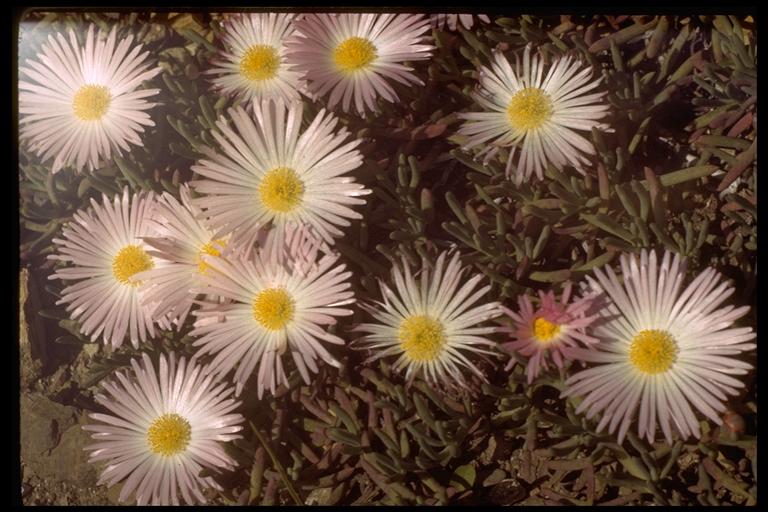Shrubs, succulent, usually rough with hairlike papillae. Roots fibrous. Stems erect to prostrate. Leaves cauline, opposite, decussate, sessile, rarely connate basally; stipules absent; blade linear, trigonous to cylindric, equal, margins entire, papillate, glistening. Inflorescences terminal on lateral shoots, pedicellate [sessile]; flowers solitary or in cymes; bracts absent. Flowers showy, tubular, 0.8-6 cm diam.; calyx lobes 5(-6), green, tapered, equal, papillate; petals distinct, white, yellow, orange, scarlet, pink, or purple, 1-2-seriate; nectary glands 5, distinct; stamens ca. 75, erect or spreading; pistil (4-)5(-6)-carpellate; ovary inferior, (4-)5(-6)-loculed, flat or convex; placentation parietal; style absent; stigmas (4-)5(-6), threadlike. Fruits capsules, persistent, membrane covering seeds present, dehiscence loculicidal; apical lids reclosing. Seeds many, light brown, ribbed, tuberculate.
Drosanthemum speciosum (Haworth) Schwantes was misapplied by P. A. Munz (1974). The taxon in question is Malephora crocea (Jacquin) Schwantes (W. R. Ferren Jr. et al. 1981). Drosanthemum speciosum is cultivated as an ornamental in California; it is not known to naturalize. For an illustration of Drosanthemum speciosum see H. Herre (1971). Drosanthemum is closely related to Delosperma though the latter genus lacks membranes covering the seeds.




